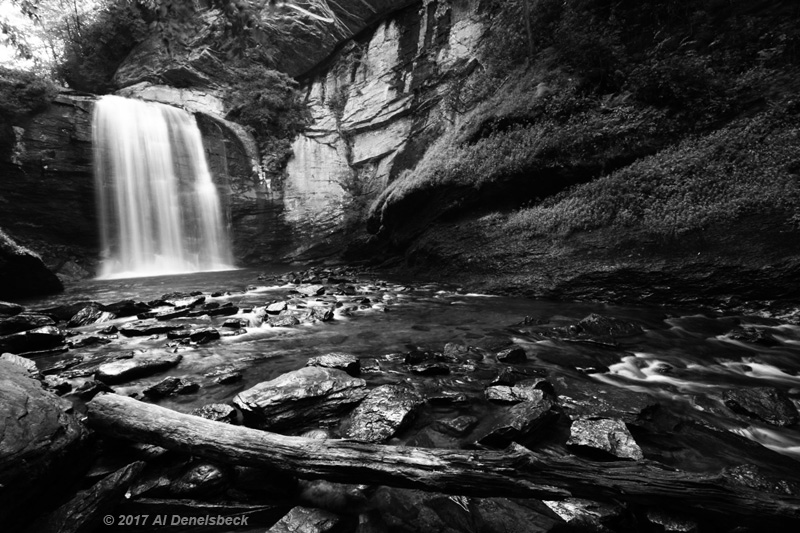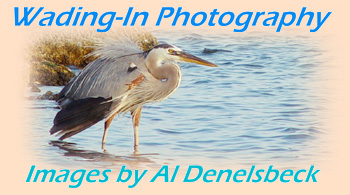Canon 30D,
tripod
Tamron 10-24 at 10mm
1/1.7 seconds at f22, ISO 100
|
Canon 30D,
tripod |
| Give it a try | |
 |
|
I have done my share of intentional monochrome shooting, which includes being out loaded with only B&W film so I had to shoot in monochrome, and maintaining my own darkroom (multiple times) and so on. It's gotten increasingly rare, however – more often, I shoot digital at the color settings that seem most likely to bring out the best effect, and will consider converting to monochrome later on if I see an image that might work. The key, naturally, is contrast, but not just of light levels – contrast between different colors can work too, especially with channel clipping.
This is one example. The color version is more than vivid enough, and works well in my opinion (whatever that's worth,) but it converted to monochrome exceptionally well too; the increased contrast that comes from wet rocks, as well as the moving water in deepening shade, lent a wide variety of light levels to the image, allowing virtually every aspect to have well-defined ranges. I tried channel clipping, but each one left out some aspect that I felt was necessary, so this is simply converted to monochrome, without even contrast tweaking.
If you're from North Carolina, chances are you've seen this waterfall before, likely even in person: it's Looking Glass Falls in Brevard, NC, and pretty easy to get to. It was a side stop on our trip to photograph the total solar eclipse of 2017, and while I believe it would have fallen within the band of totality, there wasn't much point in trying to shoot the eclipse from this location; the sun would have been entirely out of the small patch of sky that could be framed near the waterfall, plus the light levels would have prevented getting the two exposed properly together anyway. By itself, there was a certain amount of luck involved in this shot, since the popularity and ease of access to the falls means that there are often kids playing in the waters at the base. I framed the shot and bided my time, and fired off a few exposures and compositions in the brief period of time when no one was in the frame. If you got the impression of a serene and secluded spot deeper in the woods, good – that's what I was going for. But it's also a lie, since there are dozens of people just outside of the frame, even behind me, and within a minute or three there were more people in the water again. To me, that's part of the challenge of nature photography, or indeed any photography: giving an impression that works better than the reality.
